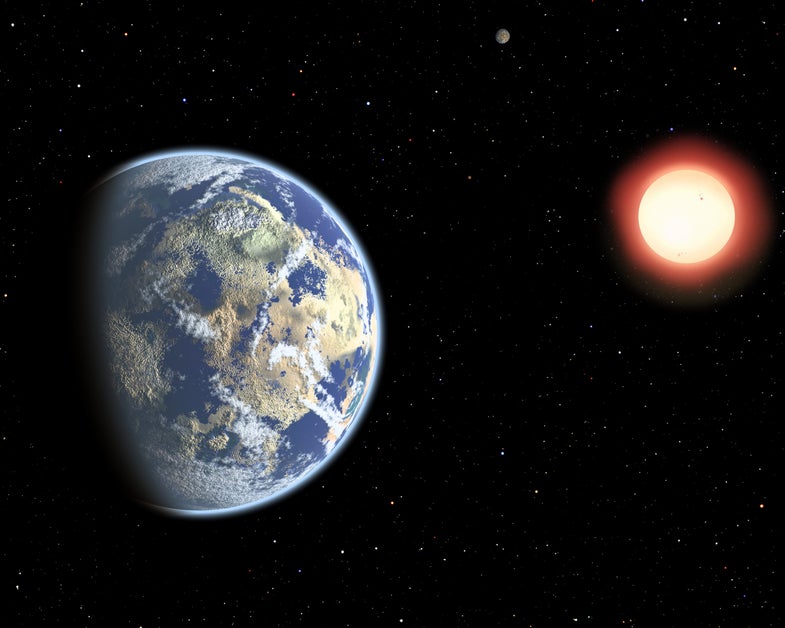Life On Earth May Have Arisen Unusually Early
Now we wait for the rest of the cosmos to catch up

In the grand scheme of the cosmos, life on earth might have popped up far sooner than it should have.
A team led by Harvard astronomy department chair Avi Loeb crunched some numbers comparing the size of stars to how soon life should form on the habitable planets that surround them. The team predicts that the odds of life developing around the more common and smaller red dwarf stars will increase drastically in the future. In other words, when it comes to life, maybe we ain’t seen nothin’ yet.
Life has lots of prerequisites. It starts with a planet orbiting a star, so the star’s energy can fuel the life-inducing chemical reactions. Those reactions generally occur in liquid water, so the planet needs to sit in a so-called habitable zone, a distance from the star where the planet is too warm for water to freeze and too cold for water to boil. The planet also needs to have oxygen, carbon, and other elements, and weigh enough so that its gravity can hold onto an atmosphere. But are those conditions unique to the Earth?
“The general idea that many people subscribe to is that, since we exist next to a star like the Sun in a galaxy like the Milky Way, for life to exist you need these conditions,” Loeb told Popular Science. “But in fact, low-mass stars are much more common than the Sun. The sun isn’t a typical star. Low-mass stars are very long-lived; they can live 1,000 times longer.”
The team combined theories and data on stars’ sizes and the exoplanets in their habitable zones to calculate the probability that life would form at a given time. They predict that a planet orbiting a star the size of our sun or bigger would develop life just around now. Stars larger than three times our Sun are generally too short-lived for life to evolve. But life won’t spring up around more common, smaller red dwarves for another ten trillion years or so. As a reminder, our universe is currently only 14 billion years old, so it might be a while until any cool alien dudes pay us a visit.
The calculations assume that life could form at all on planets in habitable zones surrounding stars as small as 8 percent the size of our sun, but that might not be the case. “There’s a lot of papers that say that life may be suppressed around those stars,” James Kasting, geoscientist and exoplanet researcher at Penn State, told Popular Science. “My guess is that very few of them have habitable planets.” The habitable zone around these small stars would be much closer in, so any planets might be more vulnerable to harmful radiation shooting off of the star. Even worse, the star’s gravity could pull much harder on one side of the planet, causing more volcanic activity that could lead to runaway greenhouse effect and the oceans boiling off, according to a paper published by researchers Rodrigo Luger and Rory Barnes.
Loeb agreed that these theories were important, but they don’t preclude the search for life on smaller stars. Other papers have postulated ways for life to form on those planets despite those constraints, and there are so many exoplanets, at least 100 billion in the Milky Way, that some percentage might become the exception to any rule.
The true importance of the research is to figure out just how weird earthlings really are. If red dwarves could host life, then we’re a few trillion years early to the ballgame. “This research has a bigger significance,” said Loeb: “whether we’re special or typical.”